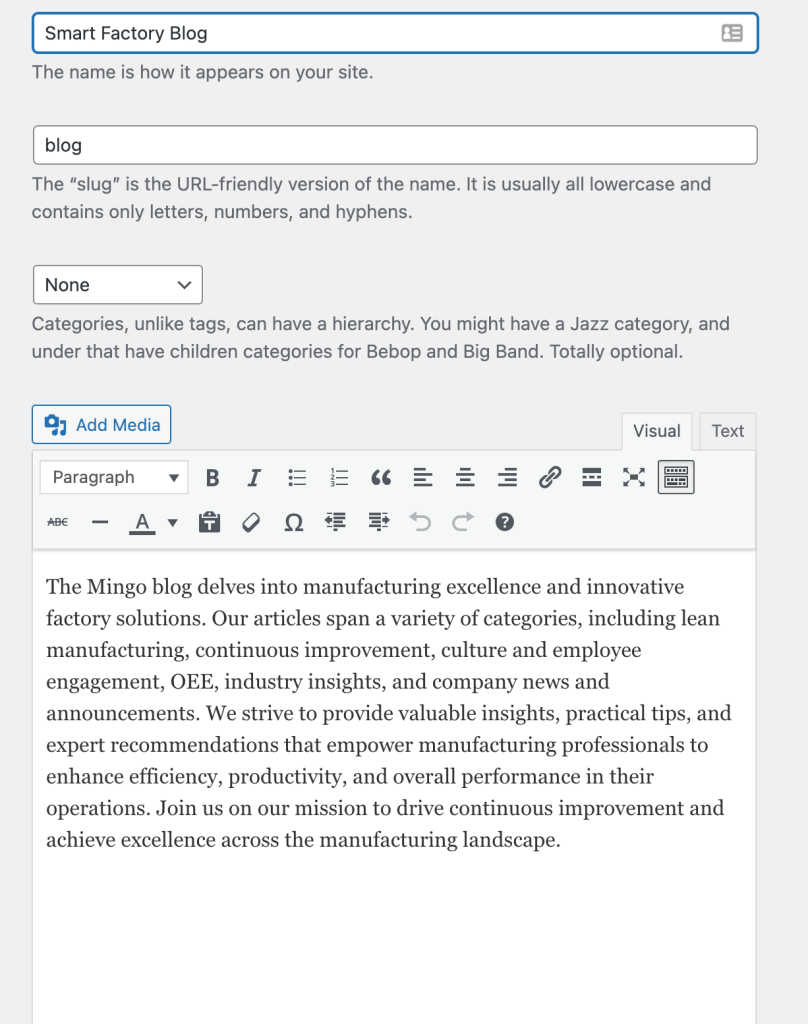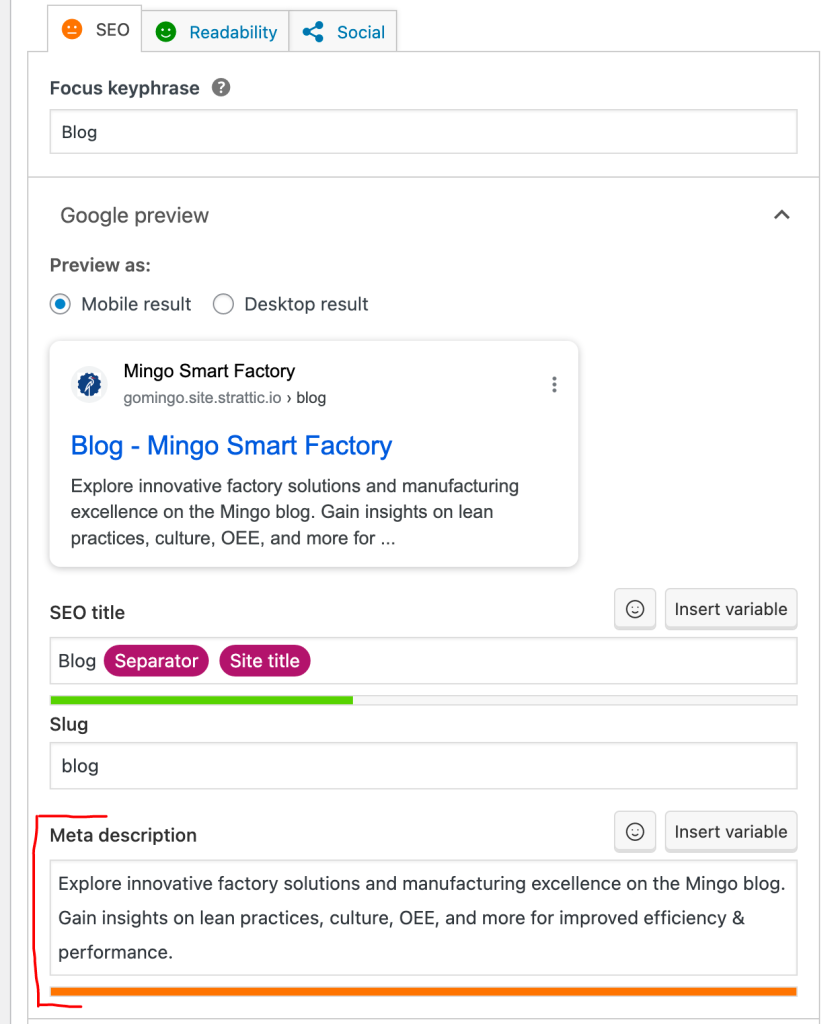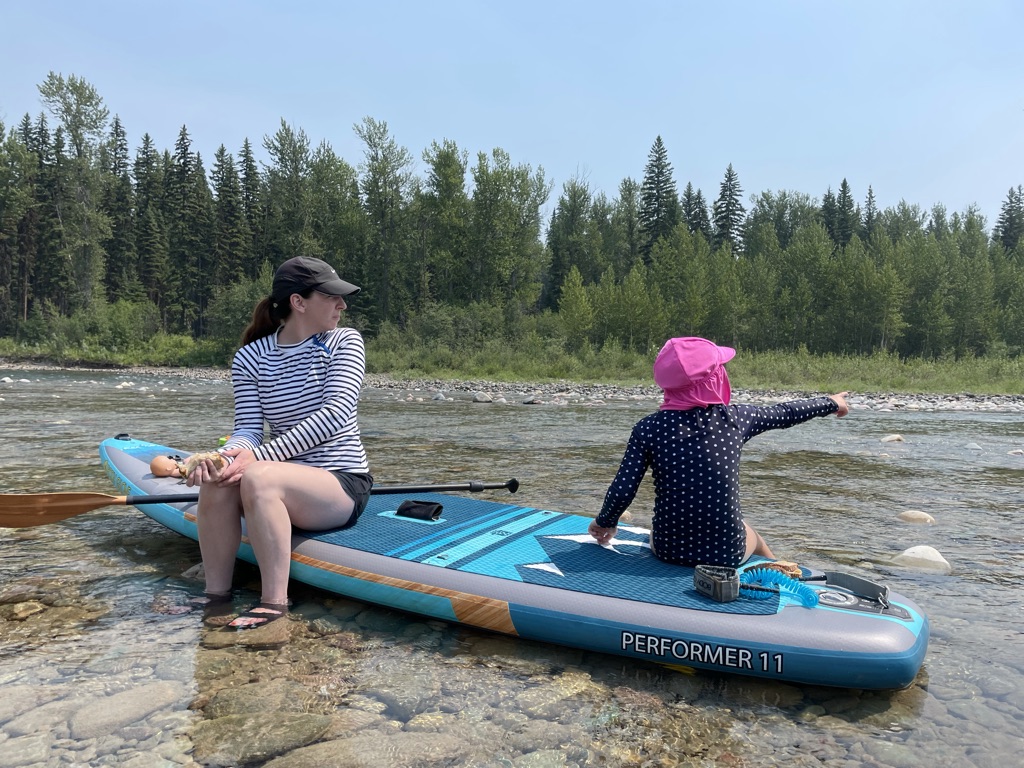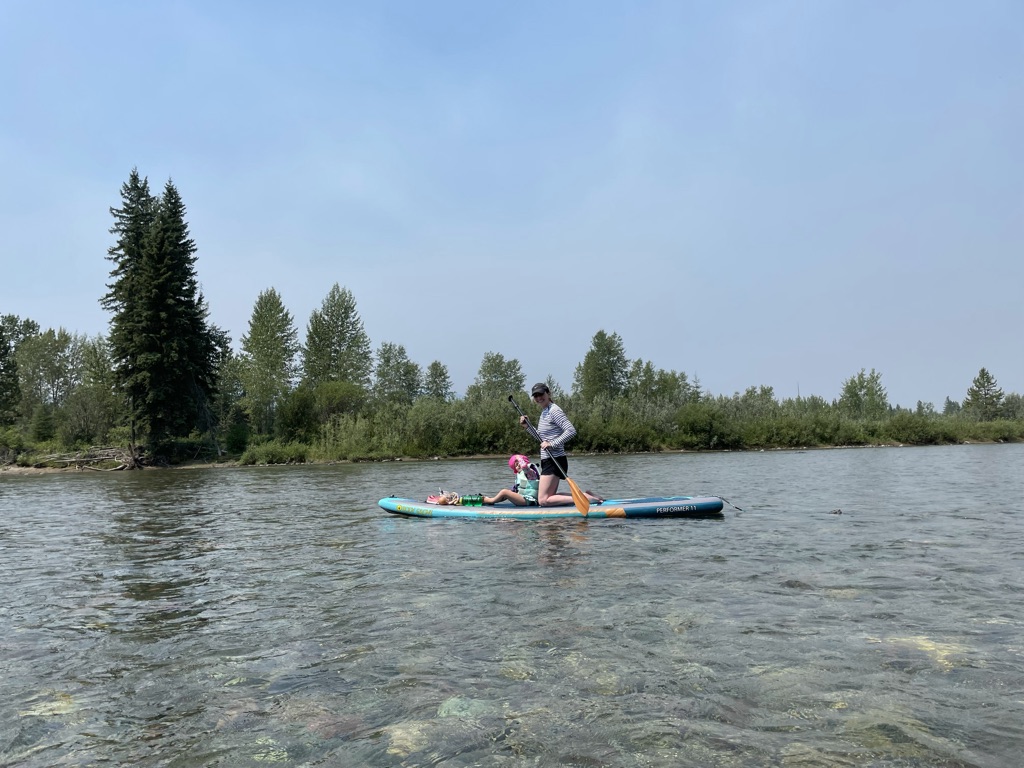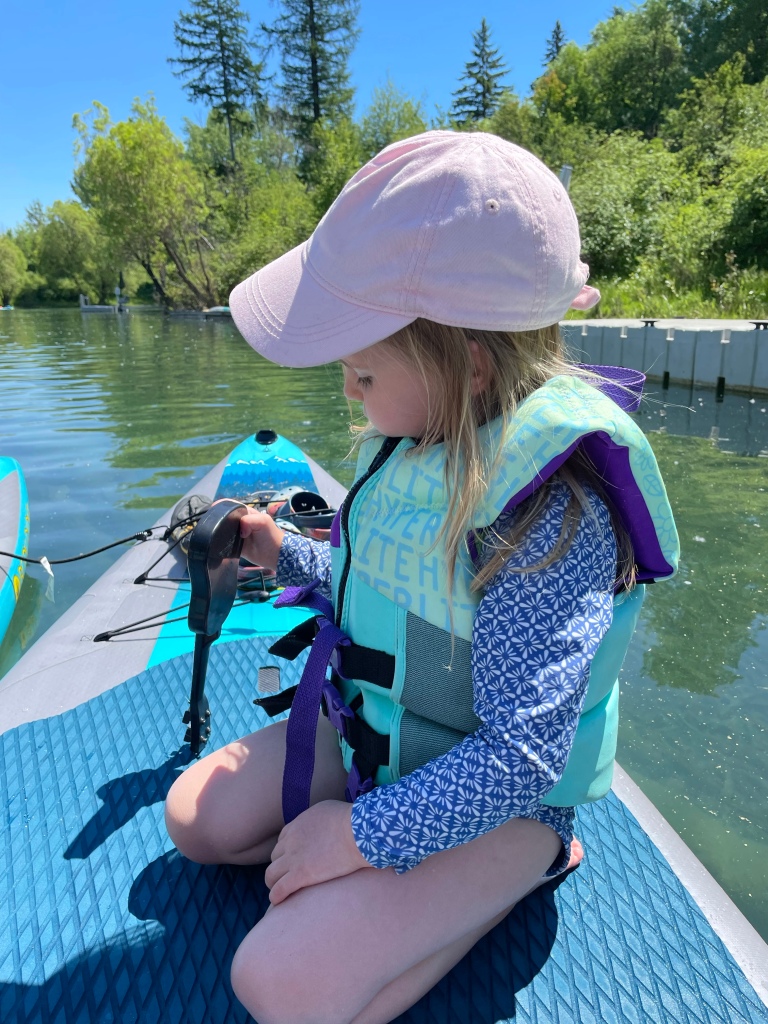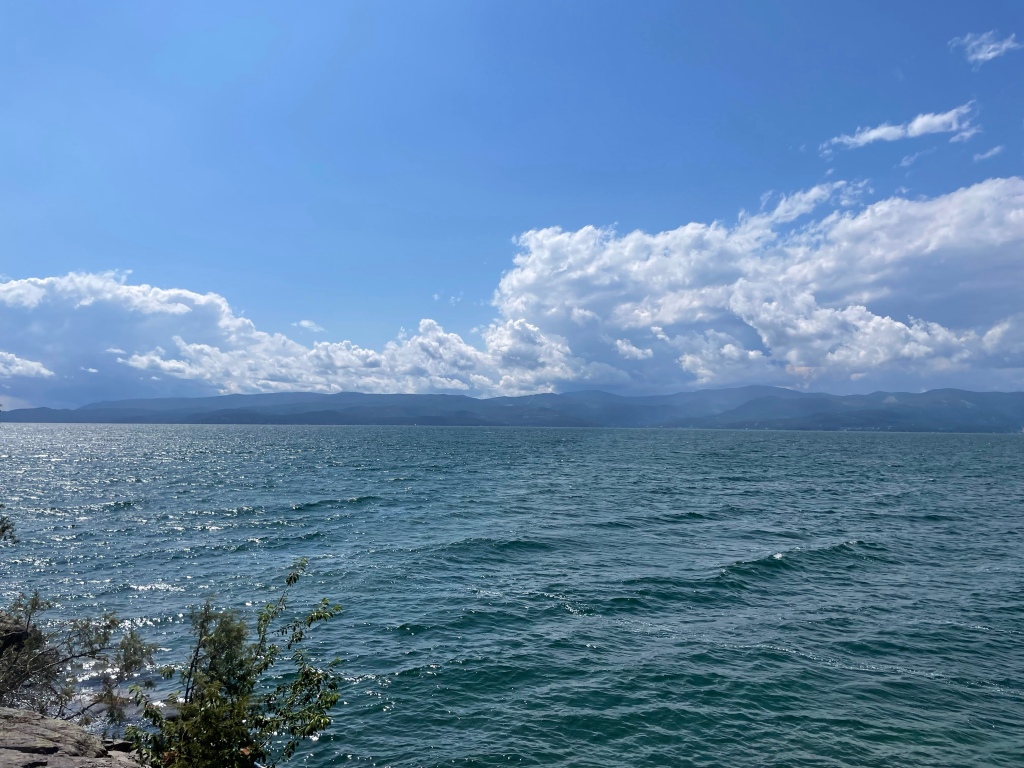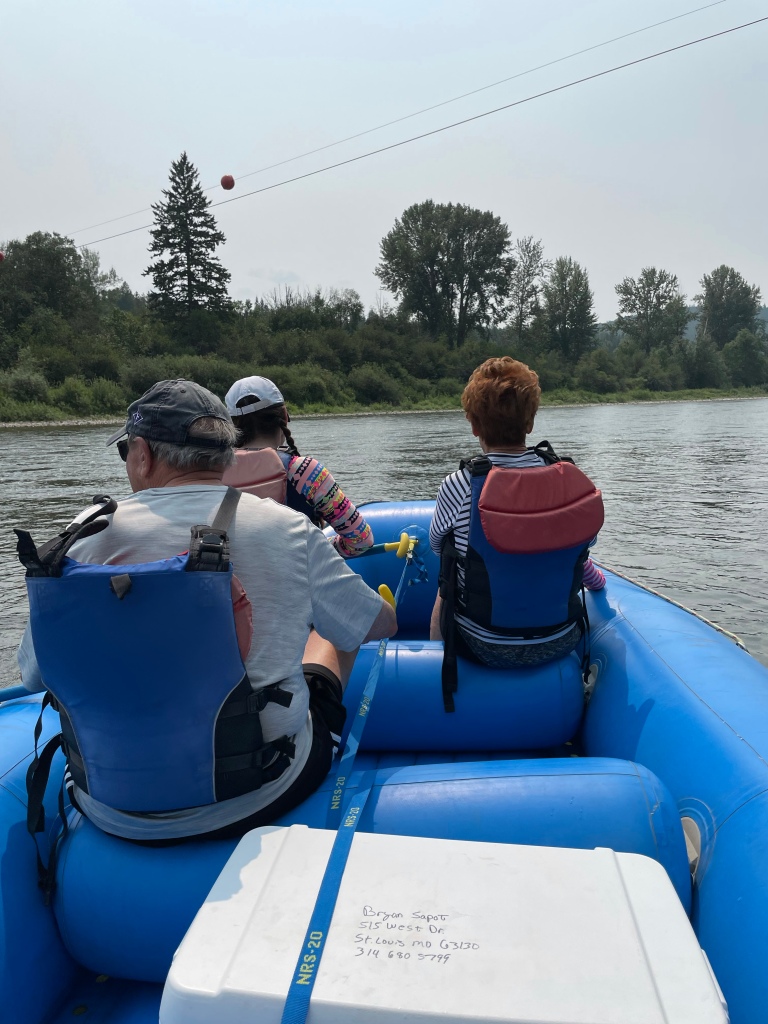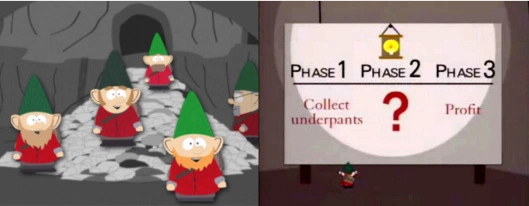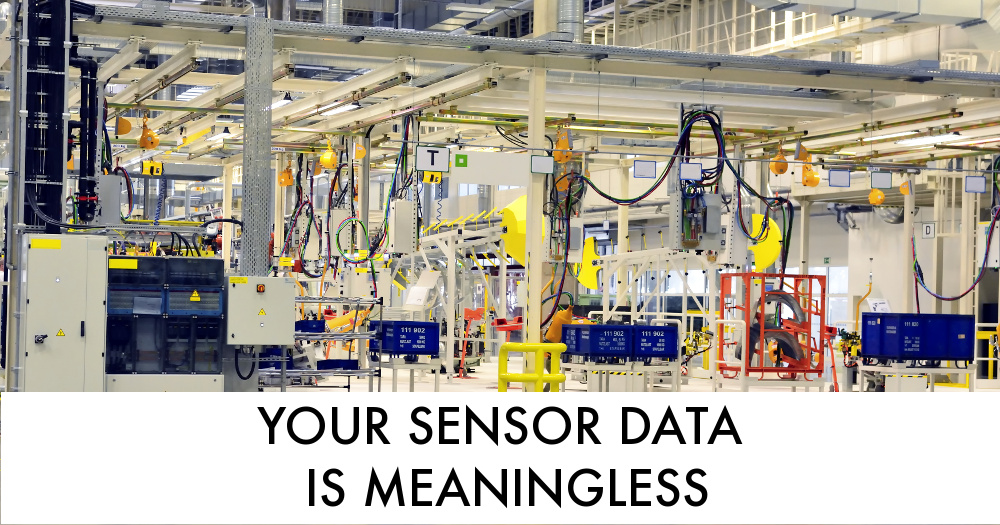A long time ago South Park had an episode call the Underpants Gnomes, it was meant to poke fun at .com companies and the internet bubble. The analogy has been used 1000s of times and I’m going to use it again.
To review the Underpants Gnomes have the following business plan:
- Collect Underpants
- ??????
- Profit
We can modify this to fit IoT Platforms as follows:
- Build IoT Platform
- ?????
- Profit
Field of Dreams
I guess I can use a Field of Dreams reference here too, if you build it they will come. They won’t. I wrote a few times how too many companies are building IoT platforms with no real use case or tangible benefits. (here and here).
They believe if you build an IoT platform people will figure out how to use it and you will make tons of money and dominate your market.
That is what Amazon, Salesforce, Microsoft, Box and every other tech giant did, right? They built a platform which everyone adopted and boom they had a billion dollars in sales. Nope they built a killer application then built the platform on top of that success.
Applications not Platforms
Think about Salesforce, did they start out building force.com, a platform to build any business application in the cloud? No, they built a CRM tool, realized people needed to customize it and can use CRM for many other things besides sales, then built a platform.
That is what the 400 or so IoT platforms need to do. Find a niche where the provide value grow that niche then expand. Then build a platform based on that success.
This is what SensrTrx is doing, we created an application to help manufacturers extract and understand data from their machines to make them run more efficiently. SensrTrx is not a platform, it is an application designed to do just that one thing.
One day it may grow into a platform but for now I’m happy with the progress we have made and the value we provide as an application.
Inflated Expectations
This has less to do with underpants and more to do with marketing. Last week an analyst from Jefferies, an investment banking firm, published a report on IBM. The report said that the promises IBM is making for Watson are falling far short of expectations. IBM commercials show Watson is a complete product for any application, is quick to deploy and has a short time to value. The reality seems to be different.
There is a large services component associated with every project and they don’t always deliver results.
The problem is that IBM has such strong marketing it warps people’s perception of what is possible and real. People assume Watson can write songs with Bob Dylan and cook with the best chefs, but that is not really true. These unrealistic expectations are then applied to any other companies claiming they have AI and machine learning technology in their applications.
The exposure of these technologies to the public is great but over the long term may do more harm than good.
Many of the IoT platforms from the big players in the industry suffer from the same issue of over inflated expectations. Which is just as dangerous, as these projects fail to reach the inflated expectations it will make other companies less likely to invest in the future. Slowing overall adoption.
At some point the platform wars will end and the companies focused on customer value and applications will be left standing. We will see the benefits of all of this technology but we have to wade through the hype to find true success stories.
